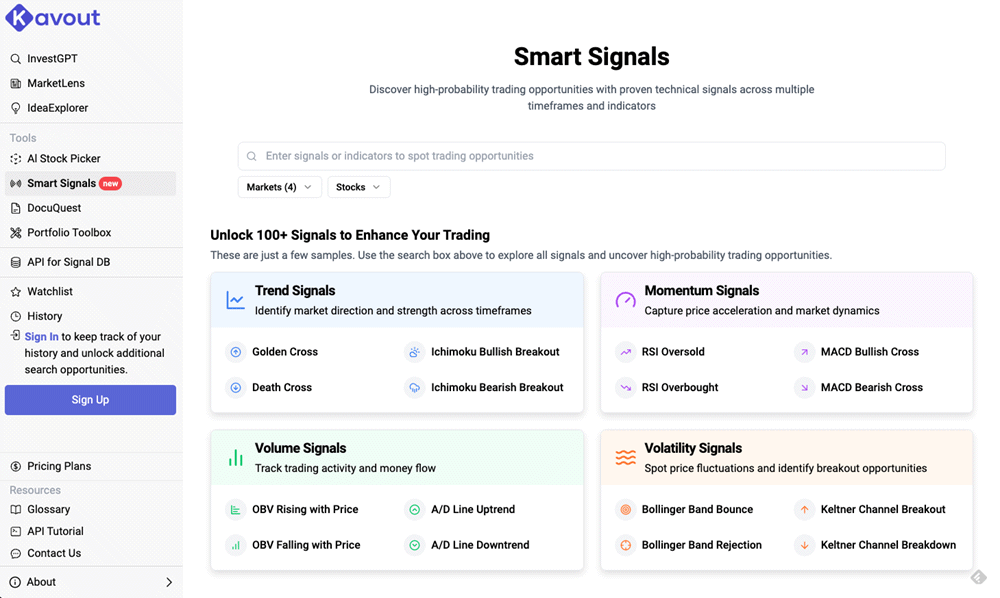MarketLens
What Are the Challenges and Opportunities in Chinese High-Dividend Yield Stocks?
Introduction
Investing in high-dividend yield stocks has long been a strategy for income-focused investors seeking regular returns. Chinese high-dividend yield stocks, in particular, present a unique blend of opportunities and challenges. As of 2024, the Chinese market offers attractive valuations and potential growth, but it also comes with significant risks. This report delves into the intricacies of investing in Chinese high-dividend yield stocks, examining both the potential rewards and the hurdles investors may face.
Opportunities in Chinese High-Dividend Yield Stocks
Attractive Valuations and High Yields
Chinese high-dividend yield stocks often trade at lower valuations compared to their counterparts in developed markets. For instance, the Shanghai Composite Index boasts a dividend yield of around 2%, which is higher than the S&P 500’s yield of approximately 1.8%. This disparity in valuations can be attributed to various factors, including market sentiment and economic conditions.
Ray Dalio, the founder of Bridgewater Associates, has highlighted the attractiveness of Chinese assets, noting that they are “attractively priced.” This sentiment is echoed by other prominent investors like Mark Mobius, who have turned bullish on Chinese markets due to favorable valuations and signs of recovery in key sectors such as real estate. For example, the Hang Seng Index has climbed as much as 31% from a January low, while the CSI 300 Index has rallied over 10% since then.
Strong Dividend Payout Ratios
Several Chinese companies maintain robust dividend payout ratios, ensuring that dividends are well-supported by earnings and cash flow. For instance, China Everbright Bank has a payout ratio of 28.4%, while Xinjiang Xuefeng Sci-Tech (Group) Co., Ltd. has payout ratios of 35.7% and 27.9% for earnings and cash flow, respectively. These ratios indicate that these companies have a sustainable approach to dividend payments, which can be reassuring for income-focused investors.
Moreover, companies like Bank of Nanjing and China Railway Construction Corporation Limited offer competitive dividend yields of 5.4% and 4.1%, respectively. Despite some concerns about the reliability of these dividends due to historical volatility, the current coverage ratios suggest potential stability in future payments.
Economic Growth and Government Stimulus
China’s long-term economic growth prospects provide a favorable backdrop for high-dividend yield stocks. The government’s stimulus measures, particularly in the real estate sector, have shown early signs of recovery, boosting investor confidence. Offshore funds have been actively buying yuan-denominated stocks, with net purchases amounting to US$11.5 billion in 2024. This influx of foreign investment underscores the attractiveness of Chinese markets.
Additionally, the trend of companies increasing dividend payouts to attract investors and reward shareholders is gaining momentum. This strategy not only provides a steady stream of income but also signals the company’s confidence in its financial health and future prospects.
Challenges in Chinese High-Dividend Yield Stocks
Regulatory Uncertainties and Geopolitical Tensions
Investing in Chinese stocks comes with significant regulatory uncertainties and geopolitical risks. The Chinese government has been tightening oversight and setting higher standards for companies to remain publicly listed. This move has led to a decline in the value of “ST” or “special treatment” stocks, which are labeled as high-risk due to factors such as consecutive years of net losses or violations of exchange rules.
For instance, the recent slide in “ST” stocks highlights the potential impact of stricter listing standards on high-dividend yield stocks. Companies that have been using unsustainable practices to fund their dividends or are experiencing financial difficulties may face greater scrutiny, leading to a potential decline in their stock value.
Geopolitical tensions, particularly between China and the United States, add another layer of complexity. Trade disputes, sanctions, and other geopolitical events can significantly impact market sentiment and the performance of Chinese stocks. Investors must stay informed about these developments and be prepared for potential volatility.
Currency Fluctuations and Economic Instability
Currency fluctuations pose a considerable risk for foreign investors in Chinese stocks. The value of the Chinese yuan can be influenced by various factors, including economic policies, trade balances, and geopolitical events. A depreciation of the yuan can erode the returns for foreign investors, making it essential to consider currency risk when investing in Chinese high-dividend yield stocks.
Economic instability is another challenge. While China’s long-term growth prospects are promising, the country faces several economic headwinds, including high debt levels, slowing growth, and structural imbalances. These factors can impact corporate earnings and, consequently, dividend payments. For example, China Railway Construction Corporation Limited has stable earnings but faces financial pressures due to inadequate cash flow coverage for its dividends and debt servicing.
Volatility in Dividend Payments
The reliability of dividend payments is a critical consideration for income-focused investors. Several Chinese companies have shown significant fluctuations in their dividend payments over the years. For instance, China Everbright Bank’s dividends have been volatile over the past decade, and Xinjiang Xuefeng Sci-Tech (Group) Co., Ltd. has experienced significant fluctuations in dividend payments over the past eight years.
This volatility can be attributed to various factors, including changes in earnings, cash flow, and corporate strategies. Investors must carefully assess the historical dividend performance and the company’s financial health to gauge the reliability of future dividend payments.
Case Studies: High-Dividend Yield Stocks in China
China Everbright Bank
China Everbright Bank offers a stable dividend coverage with a payout ratio of 28.4%. The bank’s earnings are projected to grow by 4.83% annually, which could support future dividends. However, the bank’s dividends have shown volatility over the past decade, raising concerns about their reliability. Recent executive changes and fixed-income offerings might impact operational focus but provide liquidity for ongoing commitments and growth strategies.
Xinjiang Xuefeng Sci-Tech (Group) Co., Ltd.
Xinjiang Xuefeng Sci-Tech (Group) Co., Ltd. generates its revenue primarily from the research, development, production, and sales of civil explosives. The company has a mixed performance in dividend reliability, with payments showing significant fluctuations over the past eight years. However, dividends are well-supported by both earnings and cash flow, with payout ratios of 35.7% and 27.9%, respectively. The company’s dividend yield stands at a competitive 4.04%.
Bank of Nanjing
Bank of Nanjing has a dividend yield of 5.4% and a payout ratio of 31.4%. Its first-quarter net income rose to CNY 5.71 billion from CNY 5.43 billion year-over-year, and its earnings per share also increased slightly. Despite concerns about the reliability of its dividends due to historical volatility, the current coverage ratio indicates potential stability in dividend payments moving forward.
China Railway Construction Corporation Limited
China Railway Construction Corporation Limited has a dividend yield of 4.1% and proposed a final dividend of RMB 0.35 per share for 2023. The company’s earnings have been stable, but its dividends are not well covered by cash flows, and debt is not well serviced by operating cash flow. Despite these financial pressures, the stock trades at a favorable P/E ratio of 4.9x compared to the broader Chinese market.
Strategies for Investing in Chinese High-Dividend Yield Stocks
Thorough Research and Due Diligence
Given the challenges and risks associated with Chinese high-dividend yield stocks, thorough research and due diligence are paramount. Investors should analyze the company’s financial health, dividend history, payout ratios, and growth prospects. Understanding the company’s business model, competitive position, and industry dynamics can provide valuable insights into its ability to sustain dividend payments.
Diversification
Diversification is a crucial strategy to mitigate risks. By spreading investments across multiple high-dividend yield stocks and sectors, investors can reduce the impact of adverse events affecting a single company or industry. Additionally, diversifying across different geographies can help manage currency risk and geopolitical uncertainties.
Monitoring Regulatory and Geopolitical Developments
Staying informed about regulatory changes and geopolitical developments is essential for investors in Chinese stocks. Regulatory tightening, changes in listing standards, and geopolitical tensions can significantly impact market sentiment and stock performance. Investors should regularly monitor news and updates to make informed decisions and adjust their portfolios accordingly.
Consulting Financial Advisors
Given the complexities and risks involved, consulting financial advisors can be beneficial. Financial advisors can provide personalized investment strategies, risk assessments, and insights into market trends. Their expertise can help investors navigate the challenges and capitalize on the opportunities in Chinese high-dividend yield stocks.
Conclusion
Investing in Chinese high-dividend yield stocks presents a compelling mix of opportunities and challenges. Attractive valuations, strong dividend payout ratios, and China’s long-term economic growth prospects offer significant potential for income-focused investors. However, regulatory uncertainties, geopolitical tensions, currency fluctuations, and volatility in dividend payments pose considerable risks.
By conducting thorough research, diversifying investments, staying informed about regulatory and geopolitical developments, and consulting financial advisors, investors can navigate the complexities of the Chinese market. With careful planning and strategic decision-making, investors can potentially benefit from the high dividend yields and growth opportunities offered by Chinese high-dividend yield stocks.
Related Articles
Category
You may also like
No related articles available
Breaking News
View All →No topics available at the moment






